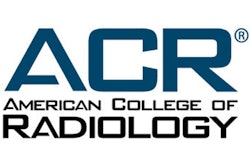Tuesday, November 28 | 12:15 p.m.-12:45 p.m. | IN004-EC-TUA | Lakeside, IN Community, Custom Application Computer Demonstration
Researchers from Taiwan will present a scientific poster describing their institution's success with implementing a radiation exposure monitoring system.In a 2010 survey of 444 CT scanners at 242 hospitals in the country, the Taiwan Atomic Energy Council found that the average radiation doses from various adult CT scans were on par with the 2008 American College of Radiology (ACR) diagnostic reference levels (DRLs). However, the average radiation dose from pediatric CT scans was higher than the 2008 ACR reference level; some scans were more than 3.62 times the reference level, according to presenter Dr. Ming-Feng Li of Kaohsiung Veterans General Hospital in Kaohsiung City.
"Any added risk, however small, is not acceptable if it does not benefit the patient -- especially for the kids," Li said.
No medical institutes in Taiwan regularly report and monitor patient radiation exposure, so the researchers wanted to start with patients at their large public tertiary care center. The team developed its own radiation exposure monitoring system, which was implemented in the institution's RIS.
The program collects dose information from various imaging modalities -- such as CT, mammography, fluoroscopy, and angiography -- and stores the data in the RIS database, where it's readily available to both radiologists and clinicians while they are performing routine tasks, Li said.
"Over the last three years, the average effective dose of various CT scans performed in our institution has decreased by about 15%, and the number of patients with accumulated effective dose exceeding safety standards has decreased by about 19%," Li told AuntMinnie.com. "Our [radiation exposure monitoring] system enables regular dose monitoring and reporting of our exams, which truly helps us tremendously in minimizing the radiation exposure of patients as well as improving safety and quality of care."
Stop by this poster in the Lakeside Learning Center to learn more.





















